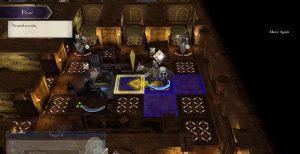The turn-based strategy genre has long been niche-specific. It usually appeals to a relatively small yet loyal audience. However, Fire Emblem: Three Houses manages to break through these barriers. If you have a Nintendo Switch, this should be your blind buy.
Key Takeaways
- Fire Emblem: Three Houses is the perfect turn-based strategy game and it can turn anyone into a fan. It is designed in a way that perfectly blends strategic planning with social interaction.
- The game offers rich character development and strategic depth, where your choices shape unique characters and their stories, much like positioning pieces in chess for a tactical advantage.
- The unique time-skip mechanism divides the storyline into two phases and brings drastic changes to the storyline and players get to see the best character development.
- Similarly, it is very beginner-friendly as players can rewind time during battles, learn from mistakes, and enhance strategic thinking without losing their character and progress.
Why? Because it isn’t just any tactical RPG. It has all the ingredients and a captivating gameplay experience that can turn anyone into a fan of turn-based gaming (seriously). I mean, there is a reason it has been rated 9.5/10 by IGN.
What makes me so confident in recommending this game and what unique features make it stand out? Let me explain:
Deep Monastery Life And Calendar System
One of the unique elements of Fire Emblem: Three Houses is its monastery life. Unlike many other games in the genre, players spend a considerable amount of time in the Garreg Mach Monastery. Being a professor here, you will be managing your time between teaching, exploring, and interacting with students.

Similarly, the game has its own calendar system. You wake up each day with different opportunities and events. This creates a sense of routine, just like in everyday life. You will have to plan your activities carefully to manage your students as well as build relationships for strategic gains.
For example, you might spend one day exploring the monastery to find hidden items or engage in side quests while another day instructing students to improve their combat skills. I think this blend of strategic planning and social interaction is the best part of the game as it is essentially more closer to life than other games.
Rich Character Development And Strategic Depth
Two of the things that differentiate Three Houses from other turn-based tactical RPGs are its rich characters and the emphasis on strategic positioning on the map. What does it mean by Strategic positioning on map? Think of it like Chess. You need to strategically and tactically build your position on the board to get an advantage on your opponent.

The depth of character development is exceptional and it completely depends on your choices. Starting the game by being a professor at the Garreg Mach Monastery, you must choose to lead one of three houses: the Black Eagles, Blue Lions, or Golden Deer. Each house is filled with distinct characters, each with its own backstory and personality.
For example, Edelgard von Hresvelg of the Black Eagles is a determined and tough leader with a hidden agenda. On the other hand, Dimitri Alexandre Blaiddyd of the Blue Lions is a tragic hero haunted by his past. Each of your choices will grow these characters in different ways. Consequently, you can experience a deeply personalized gameplay experience.
The Time-Skip Mechanism
Another mechanism unique to Fire Emblem is the time-skip that occurs during the middle of the game. It drastically changes the storyline, character dynamics, and even the game’s world. Characters mature, relationships evolve, and the political landscape of Fódlan changes significantly.
But how does the time skip work? Let me explain:
The game is divided into two parts: the academy phase and the war phase. In the academy phase, you spend your time teaching and building relationships. After a major plot event, a five-year time skip occurs, and you enter the war phase. This second phase comprises of the consequences of your earlier decisions and the characters’ growth over the years.
Let’s take the example of Edelgard. In the academy phase, she’s a determined but compassionate leader. However, after the time skip, she becomes much tougher and more determined because of what she’s been through.
Tactical Combat And Divine Pulse Mechanism
I won’t say much about the tactical combat but I can assure the combat will certainly make you a fan of turn-based gaming. The maps and the objectives are commendable but the ability to gather and lead groups of soldiers that can perform special attacks or provide stat boosts is something that you won’t find in other games.
If you are just starting the game, you’re in luck. To help beginners, the game also features the Divine Pulse mechanic. It allows players to rewind time during battles and correct their mistakes. Consequently, you can learn from your errors without losing your favorite characters. It also helps in developing strategic thinking.
Being a turn-based game, you can get the best out of it by replaying it again and again with different outcomes based on your choices, thanks to the dynamic New Game+ mode.
These were only the highlight features and the game actually has many other things that will make you fall in love with it. If you have not yet, do give it a try to fall in love with a new genre!
Good job! Please give your positive feedback 😏
How could we improve this post? Please Help us. 💡
I have been into gaming since my childhood and have been writing about it for three years now. Pursuing a bachelor’s degree in Communication Studies side-by-side, I spend lots of time reading books, learning new skills, playing chess, working out, and engaging in Reddit threads related to gaming.



